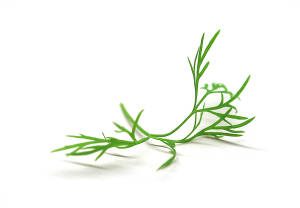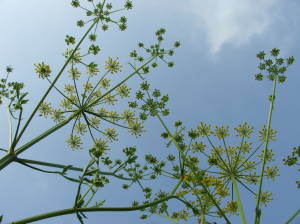Dill is a herb with a sharp, tangy flavor. It is frequently used in soups or on meat to enhance flavor. Dill is still used as a home remedy for infants with gastrointestinal complaints, although there is no evidence to support its use. Many people who eat dill report that it aids digestion, and some people choose to chew it to stave off hunger or to improve the smell of their breath.
How To Grow Dill
Dill can be grown from seed in the garden or in containers. It is best started in its final position as it transplants poorly. If grown outside, dill prefers a sunny position with well-drained soil. Be careful not to plant too close to fennel, coriander, caraway or angelica as they may cross-pollinate, ruining all of the plants’ flavor.
Sow the seeds on the surface of the soil and cover with a light scattering of soil or perlite. Germination takes around 2-4 weeks. The eventual spacing should be one foot (30cm) apart, so plant out to this spacing once the weather is warm.
Dill can grow up to 3 feet (90cm) high. It may require staking if gusty, and it may shade other plants. Small cages seem to be the optimal solution, as the plant is very thin and it is difficult to stake each one individually. The plant’s thinness has a positive side effect – the shade that it provides should not be of a level to cause much concern.
Dill should be sown in succession for a continuous supply. They rarely need watering unless during dry periods, in which case once a week will be enough. Fertilizer is unnecessary.
Growing Dill In Containers
Dill can be grown in containers around a foot deep (30cm). It will need plenty of sun, either outside or next to a window. It does best outdoors.
Harvesting Dill
Dill is harvested for its leaves and seeds. Seeds should always be harvested, even if they are not going to be used, as the plant will grow almost anywhere and you may not want a garden full of dill. Do not put them on the compost heap either.
Leaves can be harvested once the plant has reached maturity, which usually takes a couple of months. Leaves are best eaten fresh and the seeds are pickled (called “dill pickles” in the USA).


